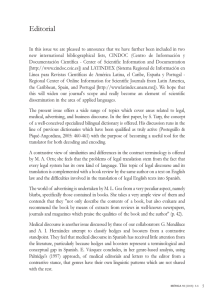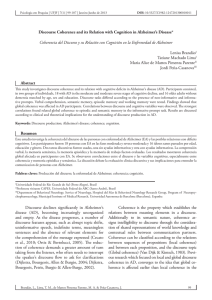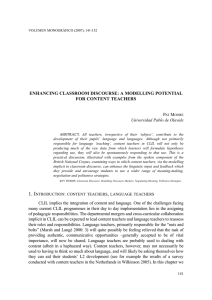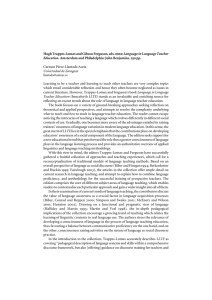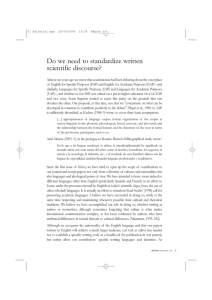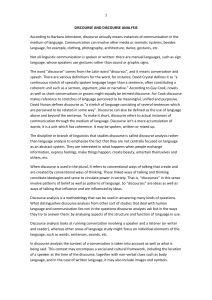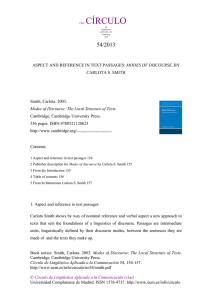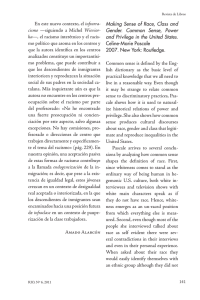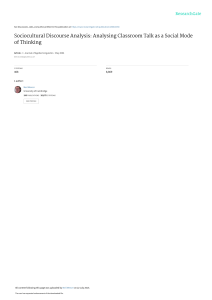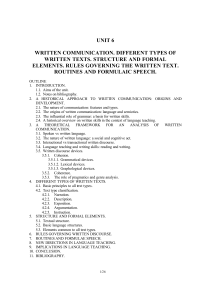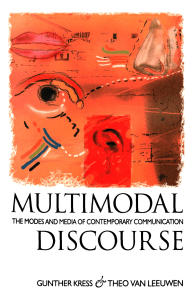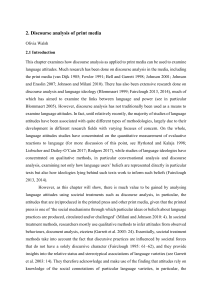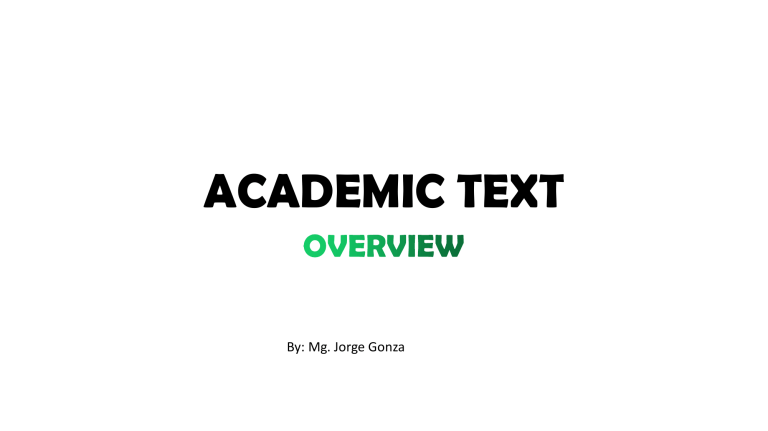
ACADEMIC TEXT By: Mg. Jorge Gonza DISCOURSE COMMUNITY • DISCOURSE COMMUNITY • In a way, there are many “Englishes”. • For example, written English and spoken English are different: You don’t speak as you write and vice versa. • Same with setting, topic, and the relationship between speakers. Language (grammar and vocabulary) varies. • One of theses differences is the “discourse community” • Our target Discourse Community is, in general, academically educated speakers of English, under their educational system. EXPLICIT, LOGIC, CLEAR (NOT AMBIGUOUS) • CHARACTERISTICS • Unlike other types of text, Academic English texts must be explicit in terms of IDEAS and FACTS. • Accordingly, the message must be clear or unambiguous: every reader or listener must understand the message in exactly the same way. • By contrast, in literature –for example– the ideas may not be explicit and may be subject to interpretation. In journalistic writing, the writer focuses on the facts rather than on the ideas. STRUCTURE AND TYPES MESSAGE [main idea] IDEAS [key points] Rational thinking FACTS [details & examples] Empirical evidence Ideas + Facts = Support TYPE MAIN IDEA KEY POINTS 1. Argument Main Point / Thesis / Reasons Opinion / Claim 2. Description Concept Classification; characteristics 3. Explanation Unexpected phenomenon / fact Causes 4. Process Purpose / Result Steps (Verbs) 5. Narrative (history, bio) Main event Important events FACTS, EVIDENCE Statistics, reports, records, censuses, prior research (journal articles), experiment results, surveys, examples
